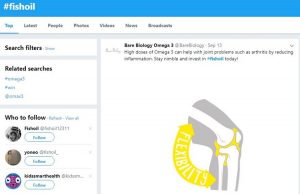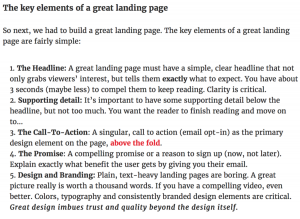After months of working from home, companies across the country are now facing one of the most perplexing challenges since the start of COVID. How do you maintain an efficient working environment while meeting employees’ newly developed needs and expectations? As the leading chief digital officer executive search firm, we are seeing modern marketers evolve and their need for a better work environment increase. It would be extremely difficult to approach post-COVID with a mandatory in-office requirement or remain fully remote. Therefore, flexibility will be a key driver during any executive recruiting process.
In today’s market, it’s important to understand that not all marketers will perform the same in a specific work environment. On one hand, remote work has helped many marketing professionals maintain a work-life balance. On the other hand, face-to-face interactions in an office offer a personal connection and community, and in some cases, more effective communication between team members working on complex projects. While every company is different, there is no question that remote work has earned a permanent place in the working environment mix. As the leading digital marketing executive search firm, we have predicted the biggest struggle CMOs will have to overcome is balancing traditional workspace and work-from-home options. By acting boldly now, your company can redefine the future of a more flexible, effective, and efficient marketing team. Here is what you need to consider in the long-run as the head of your marketing department.
Digital Marketing Executive Search Firm’s Guide To The Future Of Sustainable Working Environments:
No One Gets Left Behind
One of the biggest mistakes CMOs can make today is to transition the working environment back in time. In today’s market, leaders are expected to hone in new sets of skills to effectively lead the team. This means understanding what each team member needs to be the most productive player. Does your team perform well remotely? Do they feel like they have a work-life balance? What kind of working environment do they prefer? As leaders, it’s your job to ensure smooth communication and efficiencies while positioning your team to be successful and productive in the organization.
However, this is easier said than done. When remote employees decrease their interactions with others in the office, communication and a sense of community are potentially lost in transition. The reality is, remote members are often the last team members to be updated on strategies or ideas. These types of scenarios will cause remote marketing talent to feel isolated or forgotten. Therefore, making sure each member has access to resources and is included in all types of communication is crucial to leading an effective marketing team. By encouraging the continued use of virtual conference calls for all meetings, you are creating a unified working environment. This makes it easier for employees to choose their preferred working environment while still feeling like a part of the team.
Flexible Scheduling
One of the main things remote work has helped marketers see is the benefits of working from home. The cut of commute time has left more time for employees to pick up new hobbies, finish projects that were put on hold, or even spend a couple more hours with loved ones. A study from Georgetown found that 90% of people have a better work-life balance when they can schedule their work hours. Therefore, if you believe your marketing team can be self-motivated and find success beyond the four walls in the office, flexible scheduling is a great option to consider.
Needless to say, full-time employees should continue to work full time. To mitigate the risk of unproductiveness or inefficiencies, the leading chief digital officer executive search firm, MarketPro, has listed top flexible scheduling options.
Types of Flexible Scheduling:
- Compressed workweek – includes only 4 days of work for 10 hours a day.
- Start early, finish early
- Take a longer lunch hour and make up the time after lunch
- Fixed in-office days and remote days
These kinds of schedules offer employees the opportunity to decide how they prefer to work while still accomplishing their tasks within the 40 hours a week requirement. A study by the London School of Economics and Political Science stated, “being able to achieve work-life balance is an indicator to employees that they are being treated favorably by their bosses. This most commonly leads to reciprocating accordingly by showing a greater sense of commitment and productivity.”
Subsequently, a work-life balance is not the only benefit CMOs can look forward to when implementing flexible scheduling. Studies have shown the positive correlation between recruiting top talent and companies that offer flexibility. Research done by International Workplace Group has found that “80 percent of workers in the U.S. would choose a job which offered flexible working over a job that didn’t, and almost a third (30 percent) of people value being able to choose their work location over an increase in vacation time.” If that’s not enough, Flexjobs quoted, “job seekers are willing to take up to 8% less in salary if it meant they could work for a company that allows flexible work schedules.” Therefore, with many companies offering a standard 8 AM – 5 PM work schedule, providing flexible hours can give you an advantage when hiring top talent.
Be Open To New Ways Of Working
Given all the ways companies have changed in the last several months, working environments have a strong potential to shift once again. Instead of holding on to past management strategies, CMOs need to become more open to new ways of working. The advancement in technology has allowed most companies to reduce the need for a traditional workspace and enjoy work from anywhere with a strong WiFi connection. With years of experience, the leading chief digital officer executive search firm predicts a stronger retention rate for companies willing to adapt to the changes in the market.
However, implementing flexibility within your marketing department does not guarantee productivity or efficiency. Your marketing team must have a strong foundation before you can adopt this kind of mindset. Are you fully equipped with the right marketers to execute the marketing strategy? Does your team have the right expertise? Can your marketing team be self-sufficient? If you cannot confidently say “yes”, you do not have the right environment for flexible scheduling to thrive. It may increase the amount of miscommunication and delay your interactions with your target market. It is essential to your success to invest in top talent who can evolve and adapt to take your brand to the next level.
Business & Finance Articles on Business 2 Community(22)









